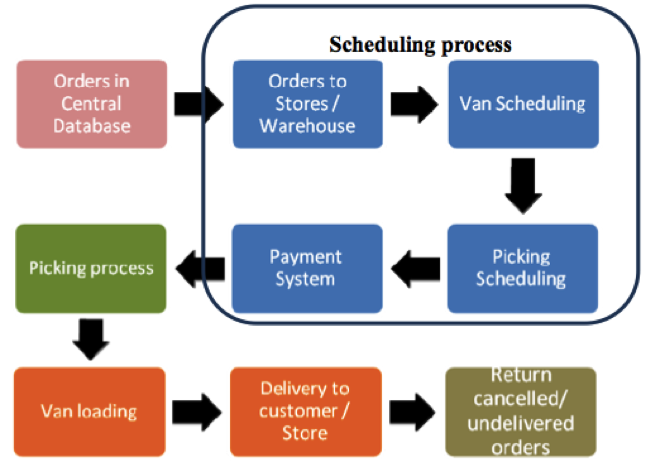Supply Chain Frontiers issue #60
How to develop high-performing omni-channel retailing models is one of the most difficult challenges facing retailers today. A study conducted recently by the Malaysia Institute for Supply Chain Innovation (MISI) investigates the complexities of the online retail order fulfillment process, and proposes efficient operating models that can be applied by bricks-and-mortar retailers.
The study focuses on Pharmacia Singapore (not the company’s real name), a Singapore-based multi-channel retailer in the healthcare and beauty business. Although many retailers have tried to adopt different online retailing order fulfillment models, most have failed due to mismatches between their capabilities and the capabilities required to meet online order demands. Very few bricks-and-mortar retailers have succeeded in utilizing their assets efficiently to profitably operate online retailing channels.
MISI performed an analysis that included a detailed cost breakdown of the current order fulfillment process flow of Pharmacia Singapore. After evaluating other online order fulfillment processes, the process depicted in figure 1 was recommended:

Figure 1: Recommended fulfillment process
Pharmacia Singapore is exploring two available options for online order fulfillment. In the first option, order fulfillment occurs from inventory at their own stores. In the second option, order fulfillment will be carried out through dedicated warehouse facilities. These warehouse facilities will be designed to incorporate online order picking capabilities. The following table gives a comparison of both picking methods.

Table 1: Comparison of picking methods
The next step is to determine which of the two order fulfillment processes is best suited for Pharmacia Singapore. To determine the optimal one, costing details for both options are analyzed. Based on the costing structures and the expected margins, MISI determined that the threshold number of orders per day that Pharmacia Singapore should secure to justify investment in the warehouse picking or in-store picking models.
Pharmacia Singapore’s management teams provided most of the data related to costing details except for sensitive data. In all instances where numbers were not disclosed, a reasonable value based on industry publications and market research was assumed. Some other assumptions were made while creating the costing model when actual numbers were either not available or sensitive.
The costing model was run with different scenarios to determine the possible breakeven points for each scenario. These scenarios were run for both in-store picking and warehouse picking as follows:
- Optimistic - refers to the scenario where the order value is higher than the expected average order value.
- Pessimistic - refers to the scenario where order value is lower than the expected average order value.
- Most likely - refers to the scenario where the order value is around the average order value expected by Pharmacia.
- Higher margin - refers to changes in expected margin for each scenario.
By developing the costing model, it was possible to identify the number of orders per day that Pharmacia Singapore has to fulfill in order to be achieve profitable operations under different scenarios. Since the numbers used to determine the actual results are confidential, illustrative results are provided to describe the model. The results of these models are shown in Table 2.

Table 2: Number of orders to achieve profitability
MISI concluded that as the order volume increases beyond a certain threshold value, retailers should look at investing in more efficient facilities to cater to the increase in demand for online orders. The model suggests that retailers should invest in in-store order fulfillment process in the initial stages when launching the online retailing services. This helps hedge against the risk of losing high investment assets when demand is low for online retailing services. Once the demand increases, however, retailers should consider developing dedicated warehouse facilities to efficiently cater to online orders.
The decision to shift to dedicated warehouse delivery from retail store delivery for online orders – an option that is more efficient with higher volume – could be achieved with a few execution challenges. First, orders fulfilled from a single warehouse will have increased average delivery times to online customers as compared to orders fulfilled from retail stores. Second, online customers may find it convenient to pick up their purchases from a nearby store, which is not recommended for the dedicated warehouse option to ensure smooth operations.
The MISI study also confirmed that delivery charge is one of the important variables that are sensitive to the overall profitability of online retailing services. With the right delivery charge, retailers can expect to make up for the cost of developing, operating and managing the resources required for the order fulfillment process. Therefore, setting the minimum purchase value for free delivery is critical to the viability of online order fulfillment.
This article was written by Dr. Albert Tan, Director of PSCM program, MISI. For more information on MISI’s omni-channel research contact the author.